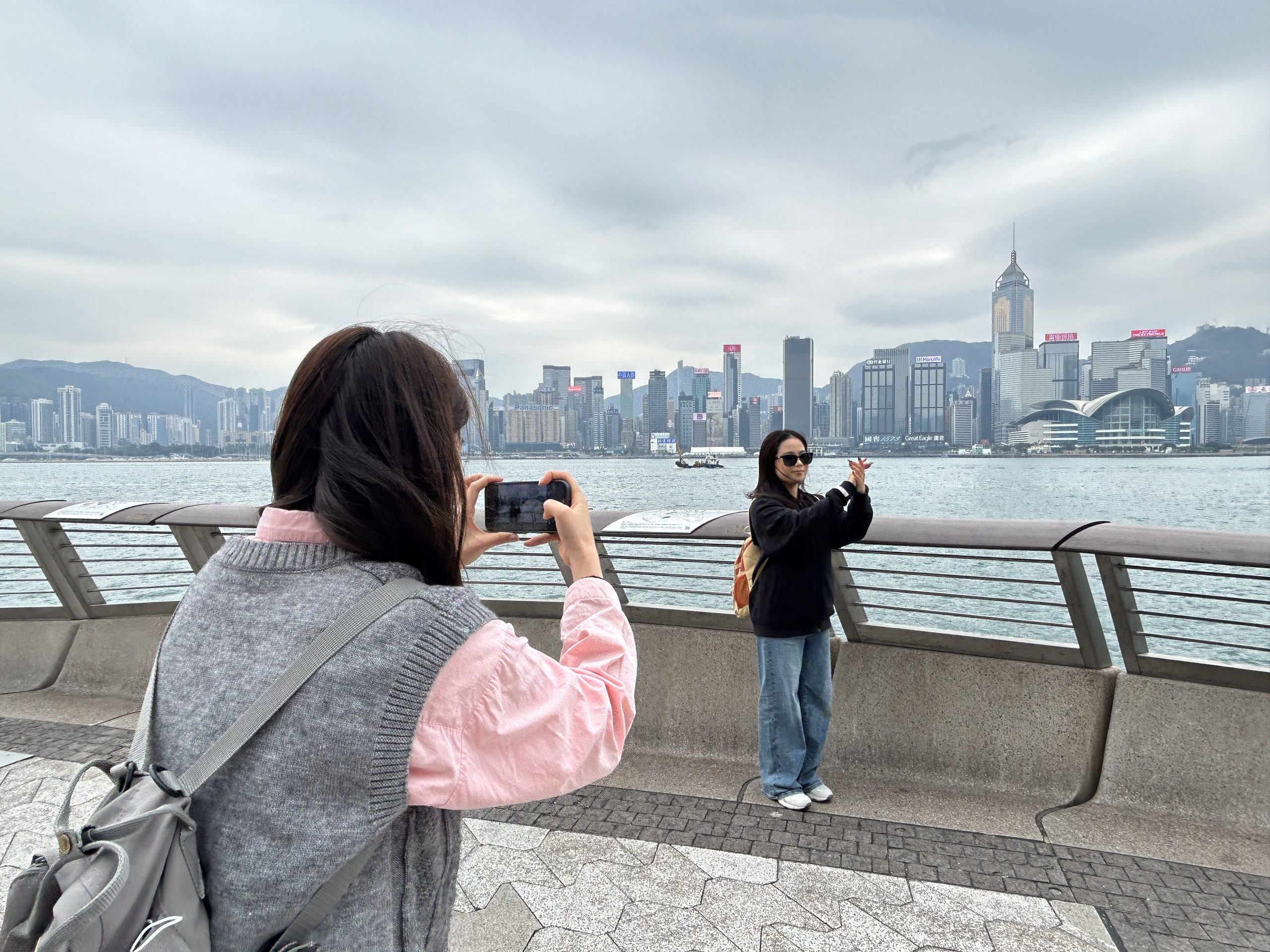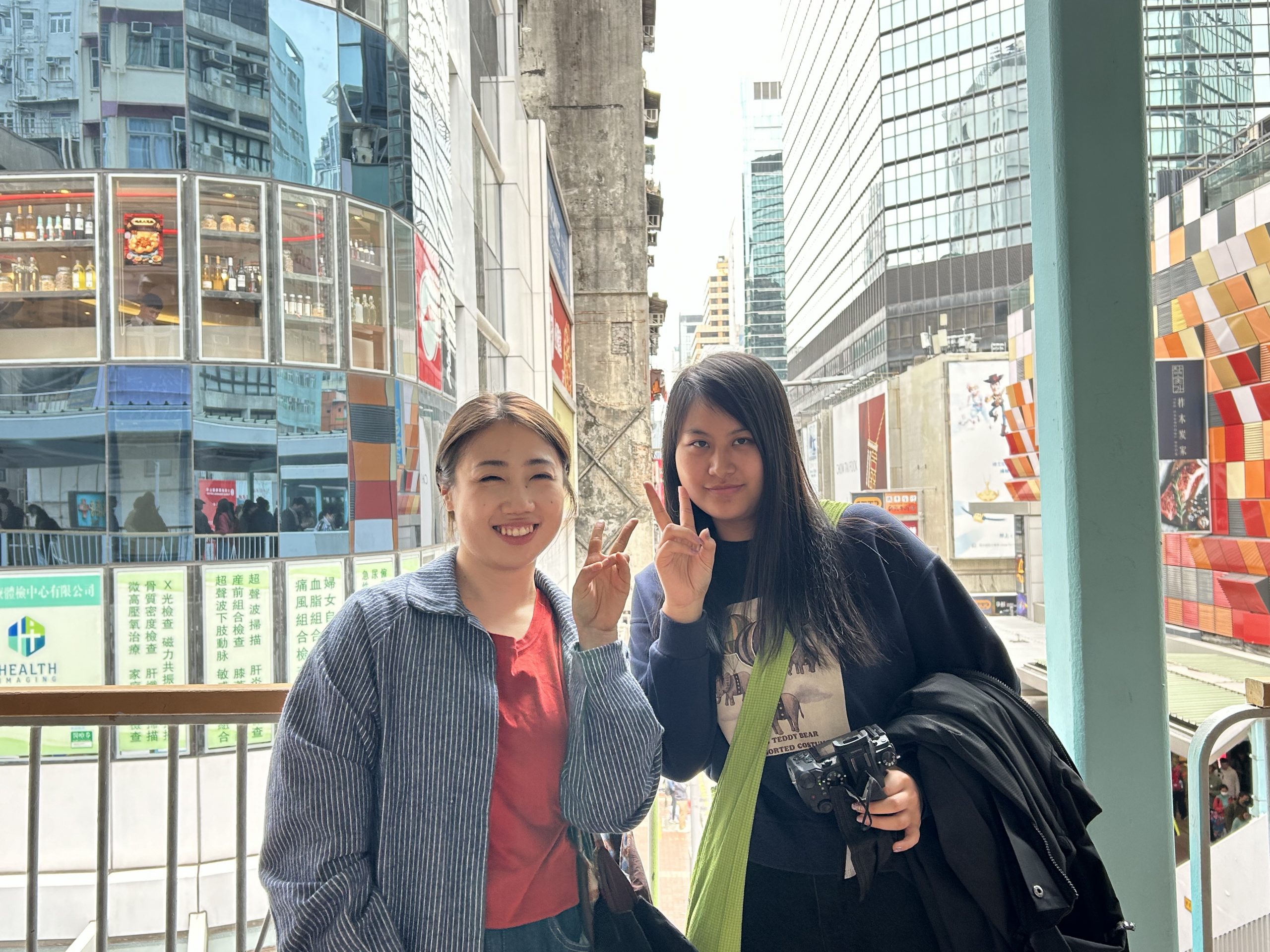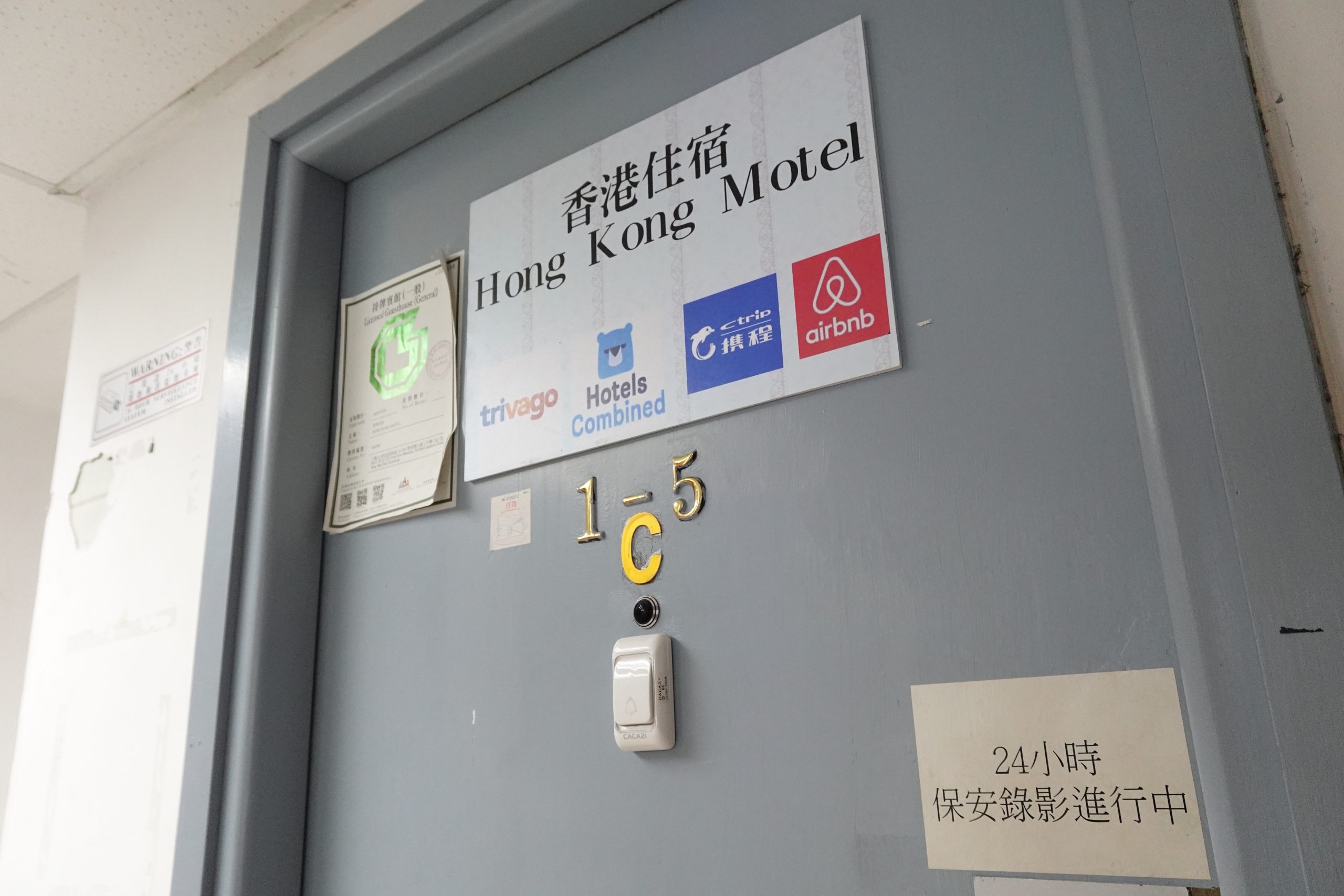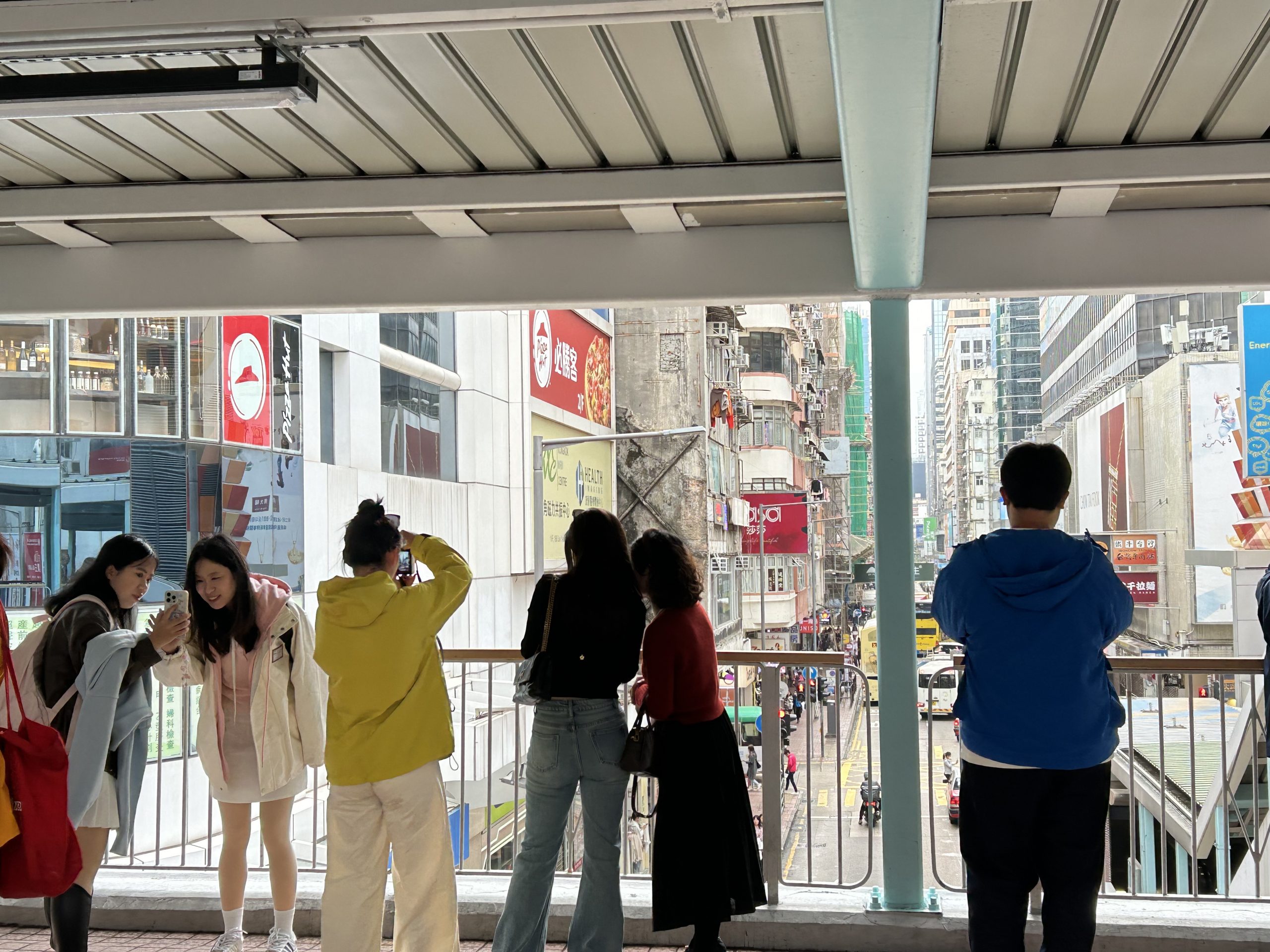It is 10 am and the Mong Kok footbridge is already buzzing with people. Tourists snap photos of the Hong Kong skyline with luggage in hand, before hurrying to their next stop. They walk thousands of steps and visit as many attractions as possible in a day.
They are the so-called special-forces tourists in Hong Kong. Like soldiers, they move from one location to another under tight schedules, often over the weekends or holidays such as Labour Day and the Qing Ming festival.
Special-forces tourism is a growing trend among mainland tourists, who have become major contributors to Hong Kong’s tourism industry.
According to the Hong Kong Tourism Board, 21 million visitors arrived in Hong Kong in the first half of 2024, with 77% of them from the mainland. On holidays such as National Day, the Immigration Department recorded 1.22 million mainland visitors, making up 88% of the total number of tourists.
The Hong Kong Tourism Board also shows a 34% increase in mainland day-trippers to Hong Kong from 2023 to 2024, causing challenges to the city’s hospitality sector.
Yu Li, 25, counts herself as a special-forces tourist. She planned to explore three districts – Mong Kok, Tsim Sha Tsui and Central, in a day.
“Last time I came here, I mainly went hiking along the MacLehose Trail, and this time I am here with my friend just to explore,” she said.
Li said she found her destinations through Rednote, the Chinese social media app where users commonly share and recommend travel plans.
“I have not been to the Hong Kong Museum of Art in Tsim Sha Tsui before, but the recommendations in Rednote made me interested in what it features,” she said.
She said she only spends around HK$2,000 a day.
“I mostly shop for medicine and smaller things like a Polaroid camera,” she said.
Statistics from the Legislative Council shows the average spending of mainland tourists in the first half of 2024 dropped to HK$2,962, a 29.4% decrease compared to the pre-COVID period in 2018.
Zheng Ying, 23, planned a two-day trip to Hong Kong, sticking to a tight shopping budget like Li.
Zheng spent around HK$2,000 on food, skin care products and shoes.
“We’re just wandering around, but we mainly want to do the famous Li Ka-shing hand pose in front of the Victoria Harbour that’s trending on Rednote,” she said.

Instead of booking a hotel room in Hong Kong, Zheng and her friend stayed overnight in a Shenzhen hotel near the Lo Wu Port.
“It only costs us around 290 yuan(HK$310) per night, but the hotels in Hong Kong may cost us HK$1,000 to $2,000. Hong Kong hotel rooms are also much smaller,” she said.

Meanwhile, Hong Kong’s hospitality sector is experiencing challenges with changes in travel patterns.
Hazel Ho, the owner of Hong Kong Motel, said there is close to zero occupancy at her motel.
“The occupancy rate has not improved since mainland China opened its borders after the pandemic,” Ho said.
She added that many mainland tourists choose to stay overnight in Shenzhen or treat Hong Kong as a transfer station to Macau.
Ho is now offering locals to rent motel rooms as long-term accommodation.

Special-force tourists affected local businesses as well.
Chow, who prefers to remain anonymous for their personal welfare, works at Tong Sum Tong, a grocery store in Tsim Sha Tsui.
She said that only about 10% of daily visitors make purchases. Their sales mostly rely on the local customers buying fish maw and cordyceps medicinal materials for Chinese New Year.
“We used to have a lot of customers on Friday, but the business has become deserted after the opening of the border,” Chow said. “Most of them just come to Tsim Sha Tsui for the night view. People are just visiting without purchasing.”
Chow hoped the tourist flow in the upcoming Chinese New Year could help boost sales.

Despite these changes, there are opportunities for the Hong Kong government to revitalize the tourism economy.
The Hong Kong Tourism Board launched a series of mega-events to attract global tourists, such as the Hong Kong Rugby Sevens, Art Basel exhibitions and Creamfields in 2024.
The 2024-2025 Hong Kong budget also revealed that the government has allocated HK$1.09 billion to boost the industry.
The plan supports tourism activities, including monthly drone performances and cultural activities.
Besides boosting local tourism, the Hong Kong Tourism Board partnered with Rednote to share famous photo spots for tourists. They invited Rednote influencers to visit Hong Kong to promote the city’s attractions.

David Leung Tai-wai, Chairman of the Hong Kong Guest Association, believes more can be done.
“After COVID-19, the declining global economy impacted everyone, including ordinary people and billionaires. The budget of tourists has decreased and their trip duration is also shorter. They prefer a tight schedule for trips,” said Leung.
Leung said that motel occupancy has risen since the government introduced the multi-entry Individual Visit Scheme, allowing Shenzhen tourists multiple Hong Kong visits per year, each up to seven days.
“In just three weeks, motel occupancy has risen by 10%, and many tourists are calling for reservations,” he added.
To increase hotel and motel occupancy, Leung suggested the government could open the multi-entry Individual Visit Scheme for more cities in the Greater Bay Area.
Leung sees Hong Kong’s East-West culture as a selling point among Mainland Chinese tourists, but cost concerns them.
“Reducing the price of hotels is only our basic responsibility, while the government's main responsibility is to stimulate local tourism,” he added.
He believes the government should attract more tourists to drive demand, allowing hotels to lower prices accordingly.
《The Young Reporter》
The Young Reporter (TYR) started as a newspaper in 1969. Today, it is published across multiple media platforms and updated constantly to bring the latest news and analyses to its readers.

New Gold Zone at 2025 International Jewellery Show boosts Hong Kong’s position as trading hub

Tropical cyclone Alfred to hit Brisbane, bringing destructive winds and heavy rainfall




Comments